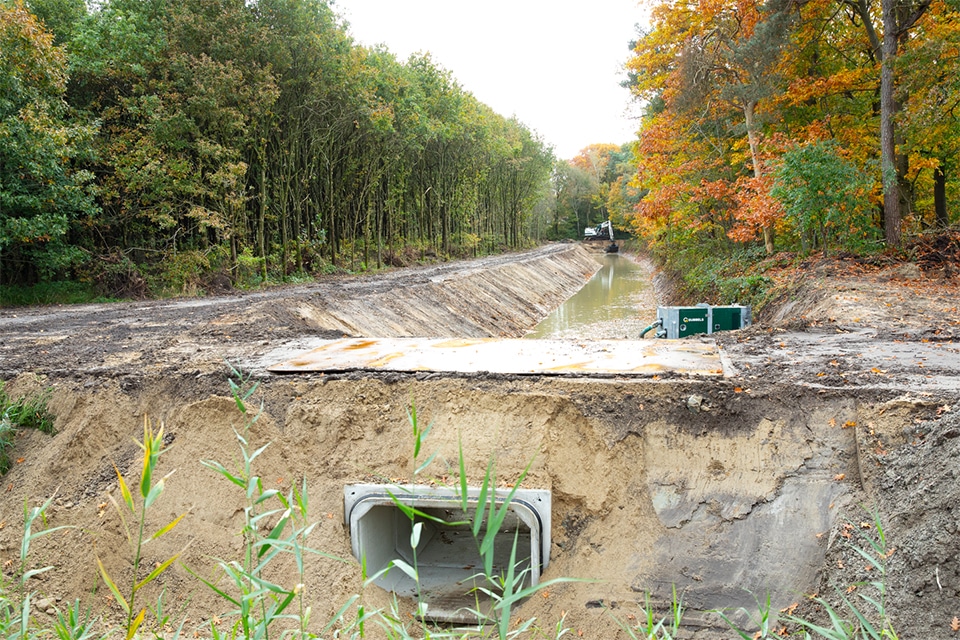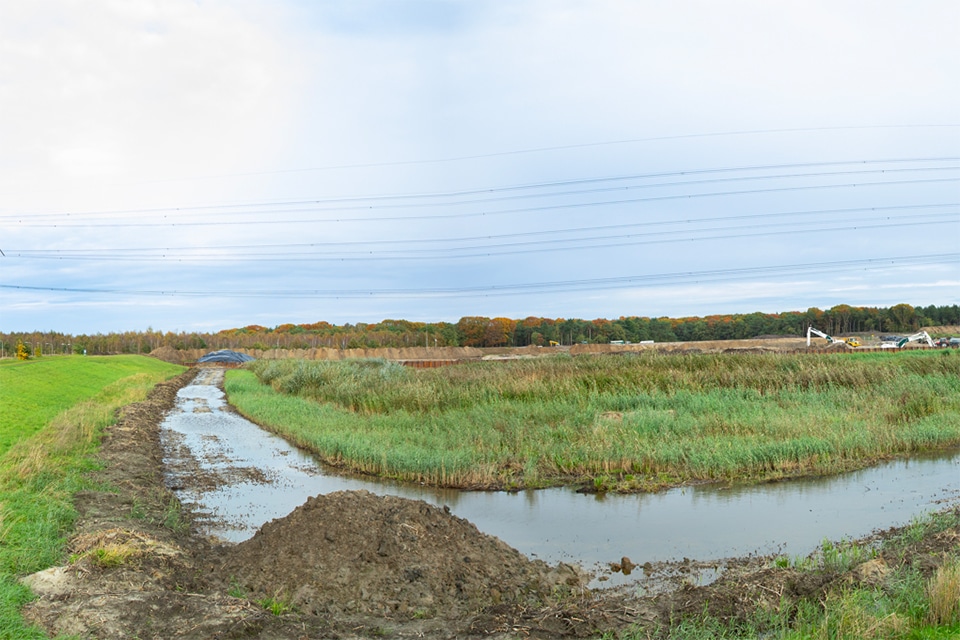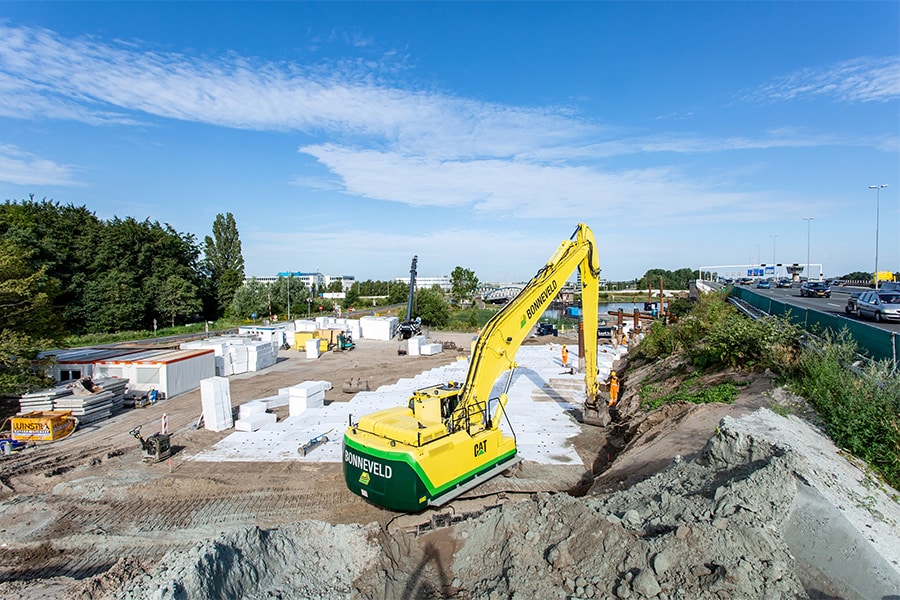
Construction preparations for Tilburg 380 kV high-voltage substation now really underway
For some time now, trucks and tractors have been driving back and forth at the water storage area of De Dommel Water Board's sewage treatment plant. In the coming months, 185,000 m3 of soil must be excavated and processed here and 100,000 m3 of sand delivered and processed to enable the construction of TenneT's 380 kV high-voltage substation. By 2026, the substation must be technically ready. Before that happens, there is still much to be done.
On Nov. 1, the four parties involved presented, TenneT, Antea Group, Strukton and Collaboration Croonwolter&dros - Mobilis (SC&M) plans to deliver the substation in 2026. The high-voltage substation is needed to guarantee trouble-free power supply. The substation will be the terminus of the new 380 kV connection between Borssele and the national high-voltage grid. This connection, South-West 380 kV, transmits power from the production locations in Zeeland and at sea to this high-voltage substation to be built. Here the connection will be connected to the national high-voltage grid. At the same time, this high-voltage substation will be connected via a transformer to the high-voltage substation at Kalverstraat in Tilburg-Noord. This is done via an underground cable. This will create space on the underlying 150 kV electricity network, thus preventing urgent problems in the energy supply.

Water storage will be relocated
The high-voltage substation will be built to the north of the water storage facility of Waterschap de Dommel. Part of the station will be at the current location of the water storage facility. Strukton is therefore relocating part of this storage for treated water to both sides of the N261, including in the old floodplain of the Noorderbos. The relocation of the water storage and watercourses requires the construction and modification of weirs and culverts. The water storage will be filled three to four times a year. The treated water then flows from the storage area into the existing watercourses (ditches and streams) on the east side. Strukton also relocates the current dike of the water storage facility.

The high-voltage substation will be 6.5 acres in size
Cooperation Croonwolter&dros - Mobilis will then start construction of the 6.5-hectare high-voltage substation at the end of this year. The station includes thirteen fields and contains three transformers that convert power from 380kV to 150kV. To make this possible, SC&M is laying concrete foundations, steel structures (supports and lightning rods) installations and gantries, among other things. Furthermore, field houses, a central service building that houses all the technology for controlling the station, for maintenance personnel and three transformers. These are completely structurally enclosed so that noise is kept out. Rainwater on the high-voltage substation is collected in the wadi. Here the water can drain away on private property. Grass tiles made of recycled plastic are laid in the station. Because the grass has to grow in small squares, it remains smaller than normal while providing a stable surface to safely walk on to inspect components.
Searching for solutions
For TenneT, relocating a water storage facility is not an everyday task. That is why engineering and consultancy firm Antea Group was called in. They developed a plan of approach based on research, thinking and calculations. Together with the municipality, water board and Natuurmonumenten, they looked for solutions to make the relocation of the effluent pond and the construction of the station possible by translating all the necessary steps into designs, an implementation specification, permit applications and tender documents including all the necessary research.




